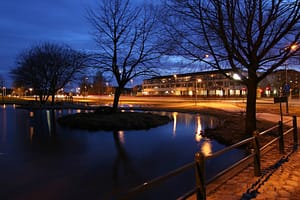LANGUAGE
Swedish
CURRENCY
Swedish krona
BEST TIME TO VISIT
May to September
NEAREST RAILWAY STATION
Stockholm Central Train Station
NEAREST AIRPORT
Stockholm Arlanda Airport (ARN)
EMERGENCY HELPLINE NUMBER
112
INTERNET ACCESS
Nearly all hostels and most hotels have a computer or two with internet access for guests, and most offer wi-fi in rooms (though occasionally hotels charge a fee). There is also wi-fi in Centralstationen, and most coffee shops offer free wi-fi to customers. Most public libraries also offer computer terminals with internet access (you may need to sign up for a free membership card).
VISA
Generally not required for stays of up to 90 days. Not required for members of EU or Schengen countries.
Citizens of EU countries can enter Sweden with a passport or a national identification card (passports are recommended) and stay indefinitely. Uppehållstillstånd (residence permits) are no longer required for EU citizens to visit, study, live or work in Sweden.
Non-EU passport holders from Australia, New Zealand, Canada and the US can enter and stay in Sweden without a visa for up to 90 days. Individuals aged 18 and 30 who hold a passport from Australia, New Zealand, Canada, Argentina, Chile, Uruguay, Hong Kong or South Korea can qualify for a one-year working-holiday visa.
For longer stays, you’ll need to apply for a visitor’s permit instead of an entry visa. These must be applied for before entering Sweden. An interview with consular officials at your nearest Swedish embassy is required – allow up to eight months for this process. Foreign students are granted residence permits if they can prove acceptance by a Swedish educational institution and are able to guarantee that they can support themselves financially.
Citizens of South Africa and many other African, Asian and some eastern European countries require tourist visas for entry to Sweden (and any other Schengen country). These are only available in advance from Swedish embassies (allow two months); there’s a nonrefundable application fee of €60 (€35 for children aged six to 12) for most applicants. Visas are good for any 90 days within a six-month period; extensions aren’t easily obtainable.
Migrationsverket (www.migrationsverket.se) is the Swedish migration board and handles all applications for visas and work or residency permits.
HOTEL
Stockholm’s most popular area is the downtown Norrmalm district, with its constant activity, restaurants, shopping, and unending distractions, and this is one of the best areas to stay. The historic old town, Gamla Stan, home to the Royal Palace and many other popular sightseeing attractions, is a good choice, too, with its central location and easy access by water to the outlying sights. Although this is a relatively expensive city, the Mariatorget district is a more peaceful and affordable option, which offers a large park with an observation deck and beautiful streets for strolling. The Slussen and Östermalm neighborhoods are just outside the center of activity but also have some good hotel options that are still ideal for sightseeing.
When booking, it is good to remember that the older buildings may not have an elevator and that more traditional European lodgings tend to have guest rooms that are smaller than those North Americans are accustomed to – but the service at Stockholm’s hotels and guesthouses is unparalleled.
LUXURY
Lydmar Hotel
Grand Hotel
Nobis Hotel
Sheraton Stockholm Hotel
MID-RANGE
Radisson Blu Waterfront Hotel
King’s Garden
Sven Vintappare Hotel
Hilton Stockholm Slussen
BUDGET
Rygerfjord Hotel and Hostel
Loginn Hotel
First Hotel Fridhemsplan
COST OF LIVING
Stockholm has a reputation for being expensive, and it absolutely deserves it. This is among the priciest cities on the planet for a tourist, to the point that it can break the budget of a backpacker even if they are just there for a quick look.
Hotels in Stockholm are generally quite nice and many of them are luxurious so it’s not like the visitor feels ripped off, though it is frustrating that finding a simple and cheap room is nearly impossible. The hostels are a decent value, as are private rooms in those hostels, which might be a better alternative for those trying to save money. If you are in for a quick visit, you should seriously look into the Stockholm Pass with hotel package, as it’s actually quite an amazing deal. Hotels in Stockholm are expensive all year round by nearly anyone’s standards. The high season generally runs from June through August and also around the Christmas holidays, with low season the rest of the year. Unfortunately, even with the so-called budget hotels in Stockholm it’s hard to find a good deal or promotion, so this is a city where you might consider staying at a hostel instead. Most of them have reasonably priced private rooms, although also with few amenities.
The attractions and the transportation are also priced at a level that puts them at the top end for all of Europe. The touristy parts of the city center are fairly compact so a person can just walk around and admire the wonderful shops and attractive locals, but once you want to actually do something it’s going to cost quite a bit.
Food, of course, is also quite pricey, with even simple meals or fast food costing more than far nicer fare in southern or central Europe. Hot dog carts are easy to find, and with these you can at least get an okay meal at an affordable price. Drinking is also quite expensive, with Sweden taxing alcohol heavily as a way to try to get the locals to lay off a bit, and it’s hard to know how well that policy has worked.

